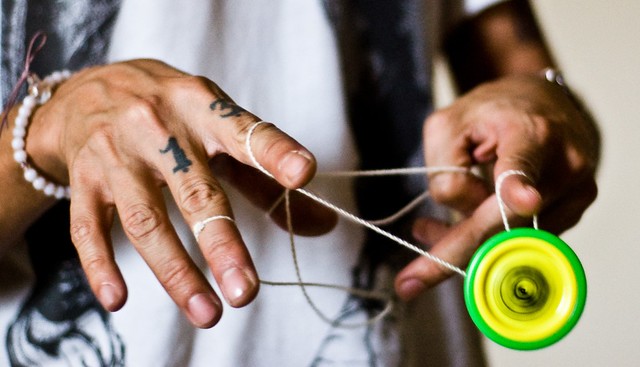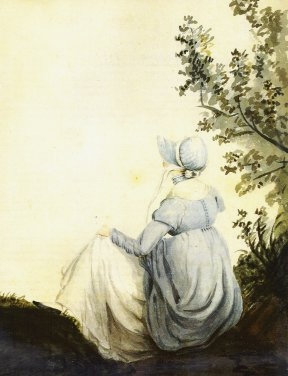You need it, I need it, we all need it. Something that will allow us to relax and let the string spool off the YoYo of Stress. If you don’t take the pressure off now and again, you go pop! like a weasel, and that isn’t good for anyone.
 The key is to find the things that relax you, and make sure you make time for them. It sounds a bit self-indulgent, perhaps, but consider these words from the philosopher and theologian Thomas Aquinas. “It is requisite for the relaxation of the mind that we make use, from time to time, of playful deeds and jokes.” In other words, lighten up a bit.
The key is to find the things that relax you, and make sure you make time for them. It sounds a bit self-indulgent, perhaps, but consider these words from the philosopher and theologian Thomas Aquinas. “It is requisite for the relaxation of the mind that we make use, from time to time, of playful deeds and jokes.” In other words, lighten up a bit.
Seneca the Stoic agrees. “We must indulge the mind and from time to time allow it the leisure which is its food and strength.” His suggestions include going for a walk to get plenty of fresh air, going on a trip for a change of scene, or having “social meals and a more generous allowance of wine.” There you are, then. Be stoic: take a walk with friends to the nearest pub. Or consider the Cowper Cups that “cheer but not inebriate” – nothing like a nice cuppa when you put your feet up.
 Jane Austen’s heroine Fanny, in Mansfield Park, says “to sit in the shade on a fine day and look upon verdure, is the most perfect refreshment.” Many others before and since have shared this view, although Mary Crawford (she of the flexible conscience), proclaims “I must move… Resting fatigues me.”
Jane Austen’s heroine Fanny, in Mansfield Park, says “to sit in the shade on a fine day and look upon verdure, is the most perfect refreshment.” Many others before and since have shared this view, although Mary Crawford (she of the flexible conscience), proclaims “I must move… Resting fatigues me.”
Others favour a creative pastime, or reading, or listening to music, or taking long hot baths. The poet Dylan Thomas claimed that “Poetry is not the most important thing in life… I’d much rather lie in a hot bath reading Agatha Christie and sucking sweets.”
When the Caped Gooseberry and I were preparing to marry, we went through a thingy designed to bring to our awareness any issues that we might have in merging our lives. Forewarned, forearmed and all that sort of thing. The results suggested that we needed to work on finding ways to relax together, because we tend to find different things relaxing. (Other than that it was pretty much you’re weird, he’s weird, go for it.) I like to read and watch DVDs; he likes to think and play strategy games.
 So we had to diversify our relaxment portfolios, and this was a good thing, because there is nothing worse (figuratively speaking) than finding yourself in a stressful situation and being unable to relax. Trust me on this. The Caped Gooseberry and I have been looking for a house to buy for some time (in fact, since just before the prices took off) and our efforts in that direction – with corresponding stress – suddenly increased three or four weeks ago. Just as I developed a pain in my wrist. What it was that was wrong with my wrist, I do not know, but I couldn’t knit with it.
So we had to diversify our relaxment portfolios, and this was a good thing, because there is nothing worse (figuratively speaking) than finding yourself in a stressful situation and being unable to relax. Trust me on this. The Caped Gooseberry and I have been looking for a house to buy for some time (in fact, since just before the prices took off) and our efforts in that direction – with corresponding stress – suddenly increased three or four weeks ago. Just as I developed a pain in my wrist. What it was that was wrong with my wrist, I do not know, but I couldn’t knit with it.
I. Couldn’t. Knit.
I had always assumed that my MO in relaxing was curling up with a classic mystery, and I had not noticed how important knitting had become in the general scheme of relaxation. Had not noticed, until it suddenly disappeared for two weeks. (Twitch, twitch.) I would no doubt have fallen back on my old standby without thinking about it, had it not been for the fact that I boxed them all up back in March because I thought they were getting a bit too much of a hold on me.
Once I noticed the rising stress levels, however, I decided it would be all right to fish a few out to be going on with. Now my wrist has stopped doing whatever it was it was doing, I can knit again, and I feel much better. The question remains: will the mysteries stay out of the box, or go back in?
Well, the stress of house-hunting has died away. (In!)
Because we bought a house today, and that brings its own stresses. (Out!)
And we’ll be moving house soon. (In!)
But unlike the last time we moved house, I have no intention of packing away the stress-relievers first. Not all of them, anyway. I have at last learned my lesson: find what relaxes you, and stick to it.





![[ D ] Edgar Degas - At the Milliner II](https://c8.staticflickr.com/8/7036/6858744743_ff2d9de6dd.jpg)



